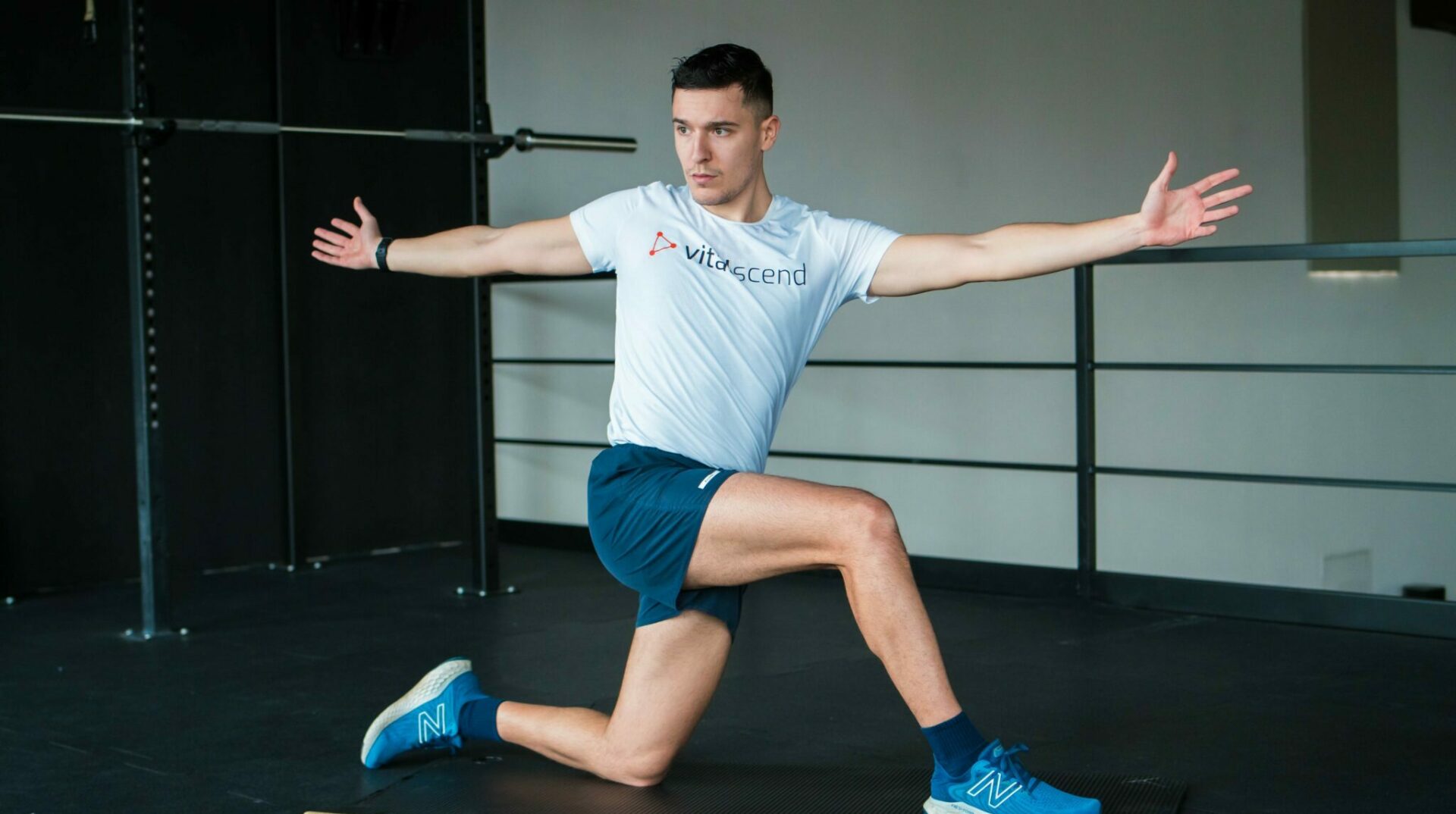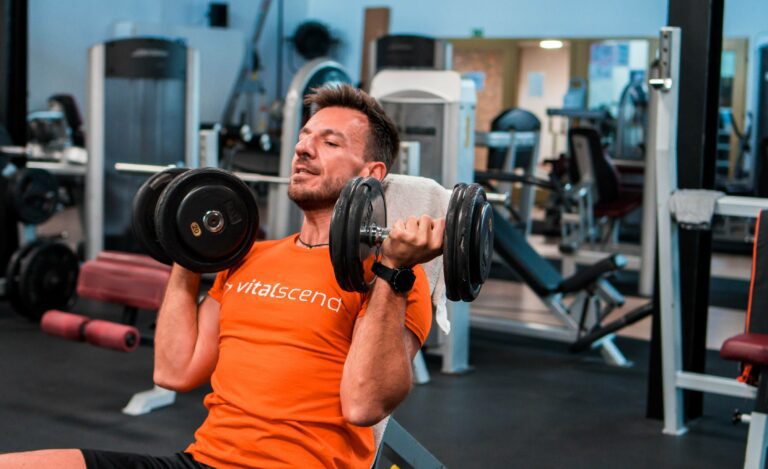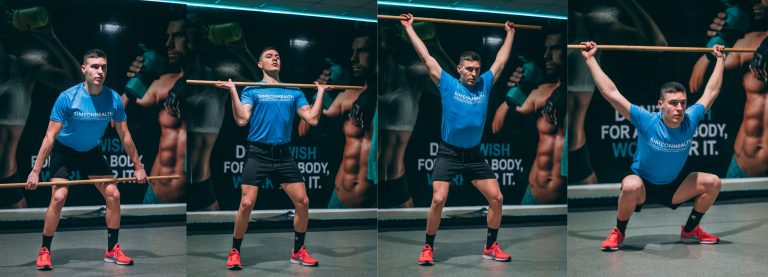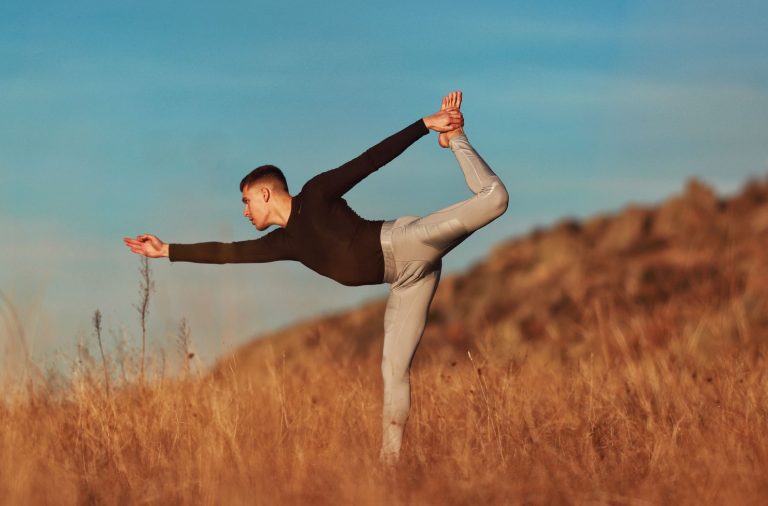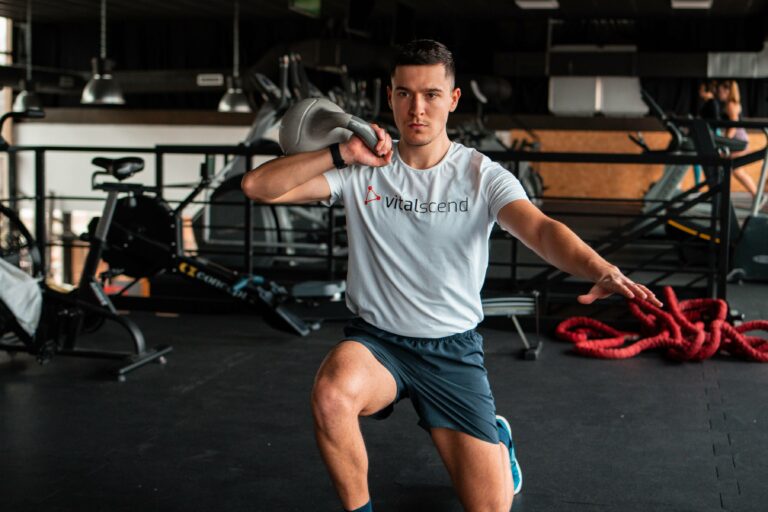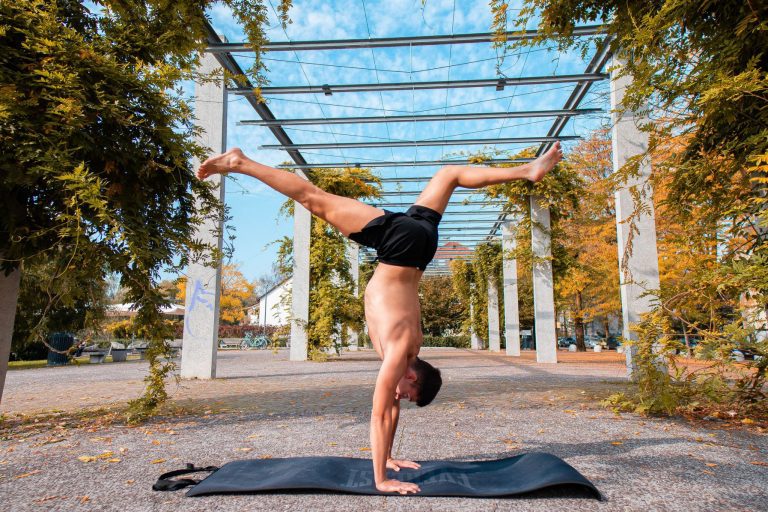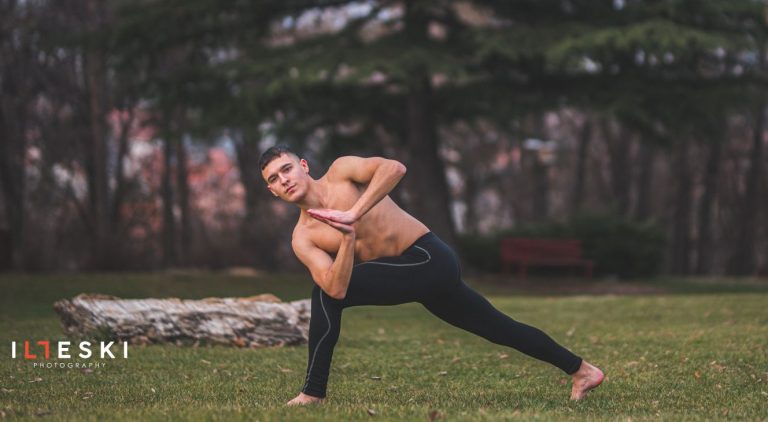Top 9 Thoracic Mobility Exercises
Thoracic mobility is an essential component of a fully functional body. It’s the piece that connects posture, breathing, and movement. Many people are pretty tight in the upper back, suffering stiffness and neck pain. It’s our sitting, typing, and staring that does it – literally not moving.
To fix this, we’ve compiled a full thoracic mobility exercise protocol, and trust me it isn’t just your regular cat-cow. It’s a more complex combination of 8 exercises most can do to increase the range of motion on your thoracic spine. Why? To be healthier, lift more overhead, prevent injury, improve posture, and loosen tightness in your upper back.
Benefits of Thoracic Mobility
Being mobile in the thoracic region allows you to lift overhead with proper posture. This minimizes the stress and load on the shoulder joint, as we can lift the bar vertically in a straight line. The result is fewer injuries, less muscle tension and stiffness, and prevention of pain. (1)
The benefits of thoracic mobility include:
- correct posture, less kyphotic curve, and better scapulae position
- less low back pain and higher mid-back strength
- prevents upper back stiffness and neck pain
- prevents muscle imbalances and incorrect compensation
- improves dynamic alignment or muscle positioning when we move
- being more functional, due to an increased range of motion
- higher strength and muscle gain when training for upper body
- lifting or picking up objects in a correct way
- increases shoulder mobility and range of motion
Fun Fact
Humans move in multiple planes. Think of throwing a baseball, playing tennis, or chopping wood. A lot of diagonal movements occur where we need to stabilize the core during flexion, extension, or rotation. For that, we need thoracic mobility.
Neck Pain and Back Stiffness
Most people with slouched forward shoulders and head have thoracic limitations. The problem is the inability to extend back to a neutral spine. This increases tension in the back, leading to headaches and neck pain.
In such a position, the scapulae tilt forward increasing the kyphotic curvature. It tightens the traps and levator scapula muscles, keeping our shoulders up all the time. (2)
Besides limiting the range of motion in our shoulder – which translates to poor mobility and stiffness, it can cause issues with breathing. (3) (4) Not being able to fully open up the chest and expand your lungs means less oxygen, which can lead to fatigue and less energy.
How to Train for Thoracic Mobility
This protocol contains all the key pieces to an optimal thoracic mobility training. The secret is not to just push the spine further in extension but slowly work all stiff tissues around in the correct way.
It’s about understanding the limited ROM in the spine, due to the movement, positioning, and pressure in the rib-cage. The point is to properly warm up and bring that fluidity and blood flow up.
Once our tissues are warm, we can slowly alternate between flexion and extension, hence why cat-cows are a great warm-up exercise. We then start to loosen up muscles and surrounding tissues, to give us that full ROM. We target assisting shoulder, abdominal and back muscles. To finish, we add a touch of proprioception, which is consciously feeling the stretch (move) and allowing our body to enter a deeper position.
Disclaimer: It is essential to consult with a qualified healthcare professional before beginning any exercise program and to stop immediately if you experience any pain, discomfort, or other adverse effects. The information provided is not a substitute for medical advice, diagnosis, or treatment, and should not be relied upon as such.
Will yoga help improve mobility and flexibility?
Yes, sure. Many yoga poses specifically target joint mobility and muscle flexibility. Warriors usually stretch out tight hip flexors, cobra stretches the abdominal part while the downdog opens up the shoulders and stretches the posterior portion of the legs.
How to improve mobility and flexibility?
You can perform activities that use the full range of motion in the joints. To increase both mobility and flexibility, some methods include stretching, foam rolling, and mobility drills. Most common and effective exercises are overhead raises, deep squats, spiderman lunge twists, and thoracic rotations.
Thoracic Mobility Exercises
The thoracic spine is a very large complex hosting numerous muscles, tendons, bones, and joints. Often with immobility, the muscles and connective tissue around the spine become very tight, causing kyphosis and locomotion limitations.
The point of these exercises is to loosen them while adding some fluidity to our movement. Note that the spine doesn’t need to be very mobile, it’s a stable joint. But we’re working on the tissue around it, so we can rotate, flex, and extend the spine to a normal range of motion.
pro tip
Since our key goals are to stimulate fluidity, improve circulation and loosen up tissues in the thoracic region – we must do repetitions in a slow and controlled manner. Mobility work requires time, patience, and depth. We must feel the stretch and allow the body to access a full ROM while being stable.
1. Cat-Cow
Cat cows are the most beginner-friendly exercise for thoracic mobility. It’s about warming up the spine, and getting the fluids going to sort of make the flexion and extension of the spine smoother.
- On all fours position your shoulders above the wrists; hips above the knees
- On your inhale look up and extend the spine, tilting your pelvis forward
- On your exhale, flex your spine, push through your shoulders, posteriorly tilt your pelvis and separate the scapulae
- Do 2 sets of 10 repetitions with 2-3 second pauses at the endpoint
The cat-cow exercise is mainly made to warm up the spine and promote thoracic mobility. It works the deep little muscles known as multifidus, attached to each vertebra. It stretches the frontal muscles such as the abs during extension, and mid-back muscles while in flexion.
2. Side Reach + Circular Transition
The Side Reach or Side Bend can be done on a chair, sitting down, or in a wider stance. It’s meant to open up the lateral side of the torso to increase thoracic mobility.
- Kneeling down in a wider stance, raise your right-hand overhead
- Left hand on your hip for support, slowly bend on the left side trying to reach as far as possible
- Once in the deep stretch, fully inhale and pause for 2-3 seconds
- When done, exhale and rotate your arm forward while actively pushing your shoulder away from the torso
- When centered, just switch the arms and repeat on the other side
- Do 2 sets of 8 repetitions on each side with 2-3 second pauses at the endpoint
The Side Bend Reach will stretch out the lateral torso muscles such as the internal and external obliques. It also stretches out large lateral back muscles like latissimus dorsi, and lower back one – quadratus lumborum, freeing up the spine to rotate more easily.
3. External Band Pull-Apart
Imagine a hunched forward position, the thoracic part is closed. The band pull-apart does the opposite. It opens up the spine while activating the key scapular retractors which keep you straight.
- standing straight, neutral spine position, posteriorly tilt your pelvis
- wrap a band around your forearms, stabilize the core, and push outwards
- you externally rotate the forearms to 45 degrees out, squeezing the scapulae together
- hold for a second, squeeze everything then slowly release back
- repeat for 10-12 reps, 2 sets in total
This one mainly focuses on strengthening the key muscles that support our posture. It targets the mid-back, muscles like the rhomboids, lower trapezius, and rear deltoid muscles. It also improves external rotation strength, known to help prevent shoulder pain.
4. Thoracic Wall Rotations
The absolute best exercise to unlock your mid-back rotation mobility. By rotating, it stretches and loosens up the key muscles, tendons, and fascia around to free up the rotation.
- kneeling lunge next to a wall, position so that your right side touches the wall
- step forward and lunge down with the opposite – left leg
- extend your arms forward, so your right shoulder and hip touch the wall
- slowly rotate to the left, opening up your spine in rotation
- go as far as you comfortably can, without rotating your pelvis
- the goal is that the right hip and shoulder stay on the wall while extending the left arm on the opposite side
- at the endpoint, slowly transition back on your exhale
- repeat for 2 sets 8 reps on each side, slow and controlled
If you notice the pelvis rotating, add a ball between your outer knee and the wall. This makes you constantly push to keep the ball on the wall.
The thoracic wall extension is a great beginner-friendly exercise. It stretches out the obliques and quadratus lumborum muscles. It also mobilizes the thoracic spine in a way that loosens up numerous deeper muscles like the multifidus or other vertebrae connectors.
5. Thoracic Extension (Bench)
The thoracic extension primarily targets the mid-back which is tight in most people. It’s the hunched-over type of posture that’s problematic. This causes lifters to arch the low back when lifting overhead. Adding this to your routine can improve both sitting and lifting-overhead posture.
- kneeling down, position your elbows on a bench (in a way that makes you feel more of a stretch, not pressure on the shoulder)
- start from a neutral spine position, which has a slight kyphotic curve
- slowly let your mid back fall down (controlled) pushing your chest towards the floor
- mainly aim at extension in the thoracic region, while the lower back can arch a bit
- do 2 sets of 12 reps to full extension and back, holding for 2 seconds at the endpoint
It opens up your shoulders and works on mid-back extension, doing the opposite of what happens in kyphosis. This releases soft connective tissue around the spine, to allow for that extension. It stretches out the latissimus dorsi, rear deltoids, and triceps.
6. Spiderman Lunge Twist
Combining hip mobility with thoracic rotation – probably the spiderman lunge wins. The deep squat rotation just got mad hearing this. While it won’t make you spiderman, it definitely will add to your functionality and spine fluidity.
- step in a lunge with the right foot forward, left leg extended back
- slowly bend the torso positioning the left hand next to your right foot
- rotate towards the sky and point your right arm up
- deep inhale, feel the stretch in your glute, feel the sensation in the spine
- hold for 2 seconds, then on the exhale move back to center, and repeat again
- 2 sets of 5 slow and controlled reps on each side, done dynamically (no pause)
Besides stretching out the lateral oblique muscles in your torso, the spiderman lunge adds to your hip mobility and stretches out the glutes. It works shoulder stability on the supportive hand and full body balance and control.
7. Thoracic Bridge Rotation
The Thoracic bridge is a functional exercise combining the three: shoulder stabilization, lateral stretch, and thoracic rotation. It’s one of my favorite full-body mobility exercises.
- seating down on the floor with flexed knees, position one hand below you for support
- slowly enter the bridge by activating the glutes and pushing through your right shoulder
- the left hand extends far back as you rotate the torso to the right
- aim to rotate, so you reach a full stretch on the lateral torso side
- once at the endpoint, you hold for 2 sec. stabilizing with the shoulder
- then you slowly lower until the but touches the floor, and repeat again (dynamic)
- do 8 reps on one side, before transitioning. 2 sets per side.
The thoracic bridge incorporates a lot of shoulder muscles to stabilize the movement. It stretches the front deltoid, latissimus dorsi, and the oblique muscles. Promotes thoracic mobility and loosens up soft tissues around the spine.
8. Thoracic Side Openings
Another great mobility exercise to open up spinal rotation is the T-side openings. It’s a dynamic one specifically targeting the lateral torso musculature and soft tissues around the spine, to promote mobility.
- lying on your side, flex both knees and hips at 90 degrees
- grip your head with your hands, and let your elbows touch
- on each inhale, you slowly begin to open up the thoracic spine so that the upper elbow touches the floor on the other side – without lifting the knee
- if uncomfortable, go to a level you feel a light stretch, not further
- you open up with your inhale and close back with your exhale
- do 1 set (each side) of 10 reps with 3-second hold, and add the 11th rep with a 10 sec. hold
The thoracic side openings mostly stretch out the oblique muscles – both internal and external ones. It promotes better rotation and spine mobility. It loosens up all the soft tissues which connect the vertebrae along with the quadratus lumborum (lower back), allowing for a better thoracic rotation.
9. Thoracic Extension (Roller)
Using a foam roller, we can allow the thoracic spine to extend further. This is a very slow movement – no pushing, no rocking, no forcing. We must feel every sensation, breathe deep, and slowly let the extension take place.
- get seated and position a smooth foam roller behind your back
- slowly lower your mid back to the roller, hands on your head, elbows together
- on your inhale slowly extend your head and neck backward
- control the movement with your abs, go to a comfortable level
- hold for 5 seconds and get back by flexing your core up
- do 2 sets of 8 reps, holding each extension for 5 sec.
The thoracic extension will open up the frontal part, and stretch out the abs and other muscles around the rib cage. It works the little tissues in your spine to loosen them up for an easier extension.
Conclusion
- The thoracic spine is the mid-section of your vertebral column hosting T1-T12 which connects to the rib cage. It’s a large complex of muscles, connective tissue, and joints.
- Thoracic mobility is important for breathing and proper posture. It can reduce upper back stiffens and neck pain, helping with focus, sleep, and relaxation.
- It is a key element of athletic performance, as it adds functionality to our movement. Higher ROM in the thoracic spine means better shoulder mobility translating to fewer injuries, better overhead press, or a more stable handstand.
- Thoracic mobility training can prevent or reduce kyphotic spine curvature or forward head posture. It works to strengthen weak muscles and stretch our tight ones while opening up the chest and mobilizing the spine.
- The training involves movements that emphasize thoracic extension and flexion, as well as rotation. It adds fluidity to the spine, loosens tight connective tissue, and adds a range of motion. It’s crucial not to force or push, but rather relax, feel the stretch, slow down, and allow the body to go deeper.

